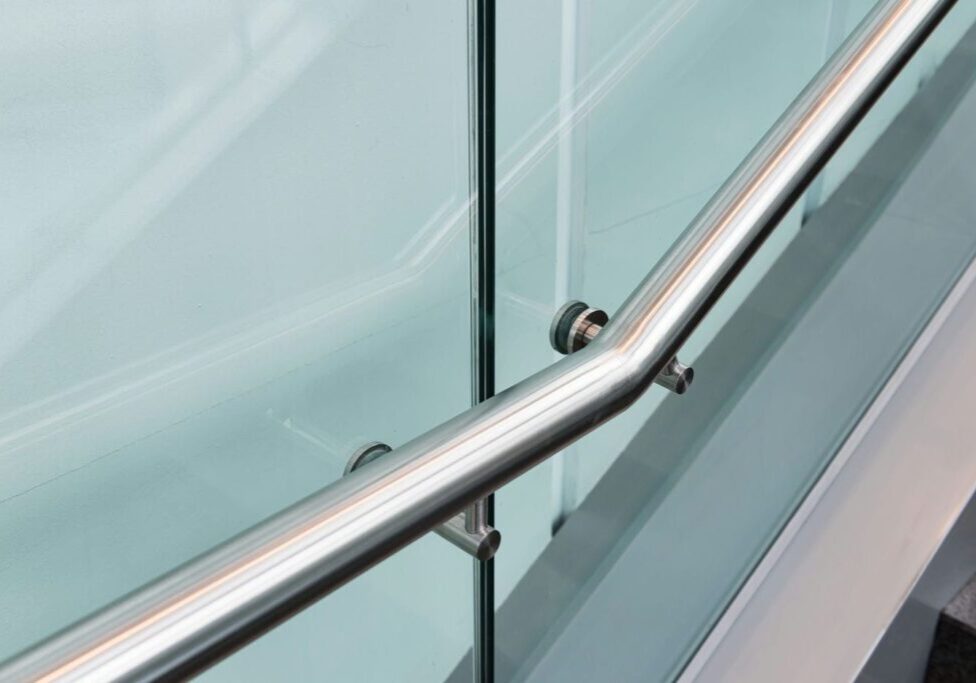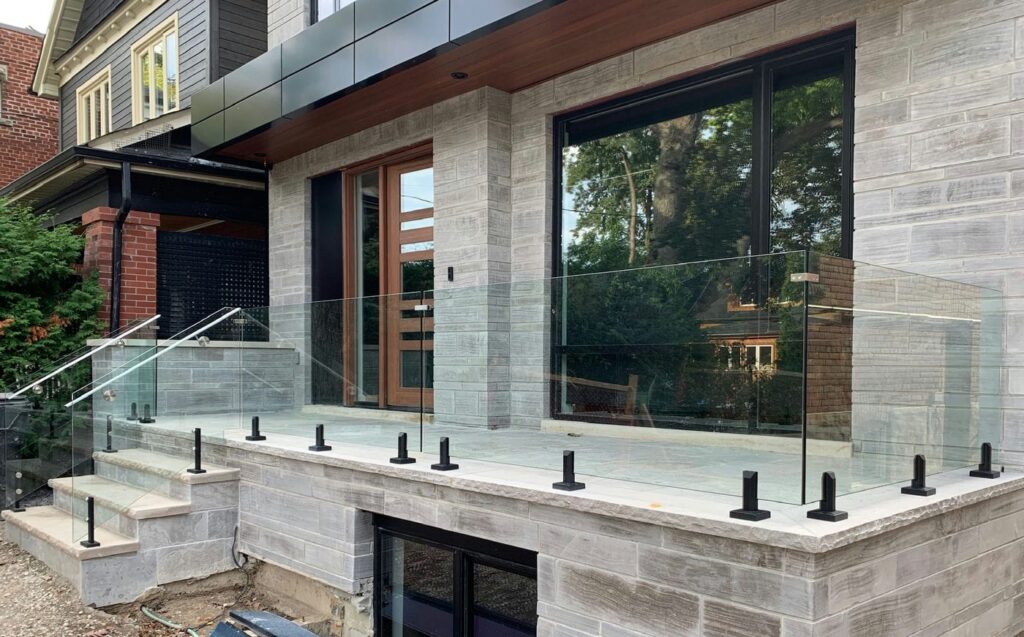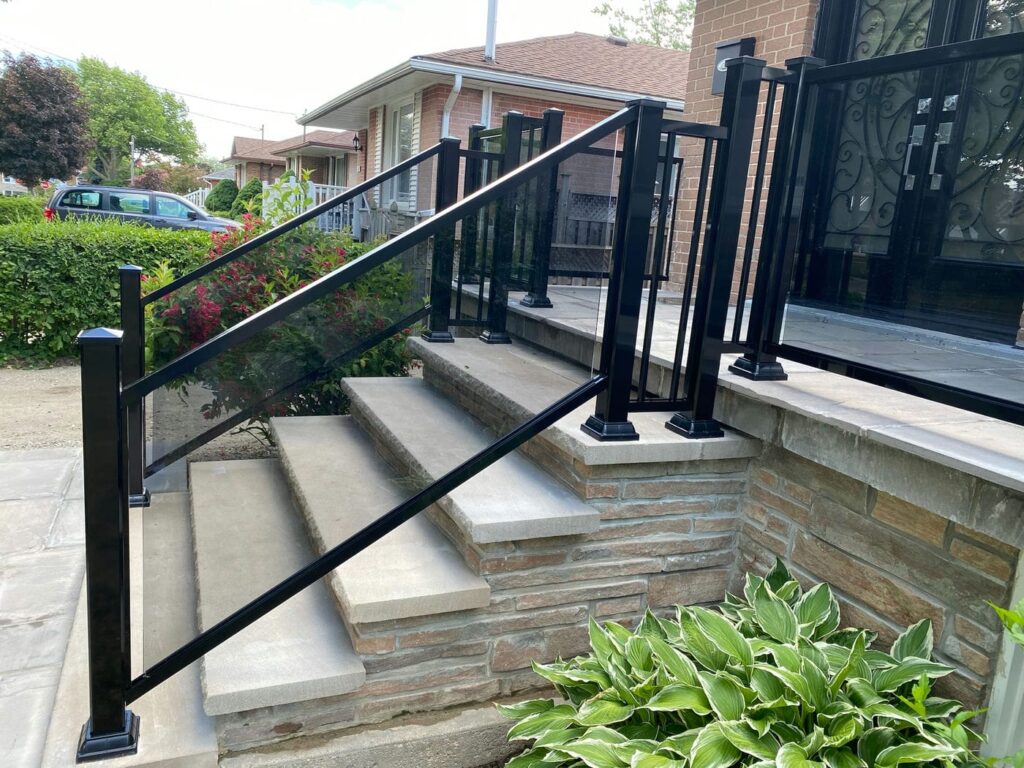
Glass railings are increasingly popular in both residential and commercial architecture, thanks to their sleek, modern aesthetic and ability to provide unobstructed views. Whether you’re renovating a balcony, decking out a staircase, or adding a contemporary touch to a commercial space, the choice of glass railing system is crucial. It’s not just about looks – the right system ensures stability, durability, and safety, all while complementing the overall design of your space.
In this post, we delve into the world of glass railing systems, focusing on three primary types: clamps, standoffs, and channels. Each system offers unique benefits and challenges, and understanding these can help you make an informed decision for your project.
Understanding Glass Railing Systems
Before diving into the specifics of each type, let’s establish a baseline understanding of what glass railing systems are. Essentially, these systems are designed to hold glass panels in place, serving as a safety barrier without compromising on the aesthetic appeal of open and airy spaces. The glass used in these railings is usually tempered or laminated for enhanced strength and safety.
Mounting systems play a pivotal role in the installation of glass railings. They not only support the weight of the glass but also define the overall look and feel of the railing. The choice of mounting system impacts everything from the railing’s sturdiness to the ease of installation and maintenance.
In the next sections, we’ll explore the three common types of mounting systems – clamps, standoffs, and channels – and dissect their pros and cons to help you decide which is the best fit for your project.
Types of Glass Railing Mounting Systems
Understanding the different mounting systems is key to selecting the right one for your glass railing project. Primarily, there are three types: clamps, standoffs, and channels. Each type offers a unique set of features and is suited for different architectural styles and functional requirements.
Clamps for Glass Railings

What are Clamps?
Clamps, often referred to as glass brackets, are small, typically metal devices that hold the glass panels in place at the edges or corners. They are versatile and can be used in various settings, from staircases to balconies.
Advantages
- Ease of Installation: Clamps are relatively easy to install, making them a popular choice for DIY enthusiasts.
- Adjustability: They allow for some level of adjustment after installation, which is useful for aligning panels perfectly.
- Minimalist Design: Clamps offer a clean and unobtrusive look, as they do not cover large areas of the glass.
Drawbacks
- Less Stability for Larger Panels: For very large glass panels, clamps might not provide the same level of stability as other systems.
- Visible Hardware: While minimalist, the hardware is still visible, which may not be desirable in some designs.
Ideal Use Cases
Clamps are ideal for smaller installations where the glass panels are not excessively large and where ease of installation is a priority.
Standoffs for Glass Railings

What are Standoffs?
Standoffs are cylindrical anchors that hold glass panels away from the surface they’re attached to, creating a ‘floating’ effect. They are drilled through the glass and secured to the floor, wall, or other structural elements.
Advantages
- Aesthetic Appeal: Standoffs provide a distinct, modern look that enhances the glass’s visual appeal.
- Durability and Strength: They offer excellent stability and are suitable for larger, heavier panels.
- Versatility in Application: Standoffs can be used in various environments, including staircases, balconies, and even as dividers.
Disadvantages
- Complex Installation: The installation process is more complex and often requires professional assistance.
- Permanent Fixture: Once installed, standoffs are not easily adjustable or removable.
Best Scenarios for Use
Standoffs are best suited for settings where a bold, modern aesthetic is desired and the glass railing is intended to be a prominent design feature.

Channels for Glass Railings
What are Channels?
Channels are long, continuous holders, typically made of metal, into which glass panels are slid from the top or side. They create a seamless and clean line, often seen in high-end designs.
Pros
- Seamless Design: Channels provide a sleek, continuous look with minimal interruptions.
- Strong Support: They offer excellent support along the entire edge of the glass, making them suitable for larger installations.
- Flexibility in Design: Channels can be floor-mounted, side-mounted, or even recessed for an ultra-minimalist look.
Cons
- Installation Complexity: Installing channels is labor-intensive and often requires precision and professional expertise.
- Cost: Typically, channel systems are more expensive than clamps or standoffs due to the material and installation requirements.
Ideal Situations
Channels are ideal for larger projects where a premium, minimalist aesthetic is desired, and budget is less of a constraint.
Comparative Analysis
In this section, we’ll delve into a comparative analysis of clamps, standoffs, and channels, focusing on various aspects such as aesthetic impact, installation complexity, durability, cost, and safety compliance. This will assist in determining which system aligns best with your specific project requirements.
Aesthetic Impact
The aesthetic impact of each system varies significantly. Clamps offer a minimalist look, ideal for projects where subtle support is desired, with the hardware being visible but not overpowering. Standoffs, on the other hand, provide a modern and distinctive aesthetic. They create a ‘floating’ effect for the glass, making them more visually prominent and ideal for designs where the railing is a statement piece. Channels deliver a sleek, uninterrupted line, perfect for contemporary and high-end designs. They are particularly effective in settings where the glass itself is the focal point, offering a clean and sophisticated finish.
Installation Complexity
When it comes to installation, each system presents different challenges. Clamps are relatively easy to install, which makes them a good choice for DIY projects. They require minimal drilling and are fairly straightforward to adjust. Standoffs, however, involve a more complex installation process. Precise drilling through the glass and secure anchoring into the supporting structure are essential, often necessitating professional assistance. Channels are the most labor-intensive in terms of installation. They require precise alignment and, once installed, can be challenging to adjust. Professional installation is usually recommended for channel systems.
Durability and Maintenance
The durability and maintenance of these systems also vary. Clamps provide moderate support but may require adjustments over time, especially in areas with high traffic or usage. Standoffs are extremely durable and stable, making them suitable for areas that see heavy use. They require minimal maintenance, which adds to their appeal in both residential and commercial settings. Channels offer excellent durability, with the added benefit of protecting the glass edges. However, they can be more challenging to clean due to their enclosed nature, which is an important consideration for maintenance.
Cost Considerations
Cost is a significant factor in the decision-making process. Clamps are generally the most cost-effective option, offering a balance between aesthetics, functionality, and price. Standoffs, while offering a striking design element, are typically more expensive due to the precision required in their installation and the hardware itself. Channels are usually the most expensive option. Their cost is attributed to the material and installation requirements, which are more extensive compared to clamps and standoffs. However, the investment in channel systems is often justified by their superior aesthetic and long-term durability.
Wrapping Up Your Guide to Choosing the Perfect Glass Railing System
In conclusion, selecting the right glass railing system – be it clamps, standoffs, or channels – is a crucial decision that impacts not only the aesthetic appeal of your space but also its functionality and safety. Each system offers its unique advantages, whether it’s the minimalism and ease of installation of clamps, the modern and distinctive look of standoffs, or the sleek, seamless design of channels. The choice ultimately depends on your specific design preferences, installation capabilities, budget considerations, and long-term maintenance needs.
If you’re in the Greater Toronto Area and considering glass railings for your home or commercial space, GTA Railings is here to assist. Our team of experts can help you navigate these options, ensuring that you choose the perfect railing system to complement your space. We understand the nuances of each system and can provide professional advice tailored to your unique requirements.
Don’t hesitate to take the next step towards enhancing your property with stunning glass railings. For personalized assistance, we invite you to fill out the form below or give us a call at 647-203-4949. At GTA Railings, we’re committed to delivering quality, beauty, and safety in every installation. Let us help you bring your vision to life with the perfect glass railing solution.